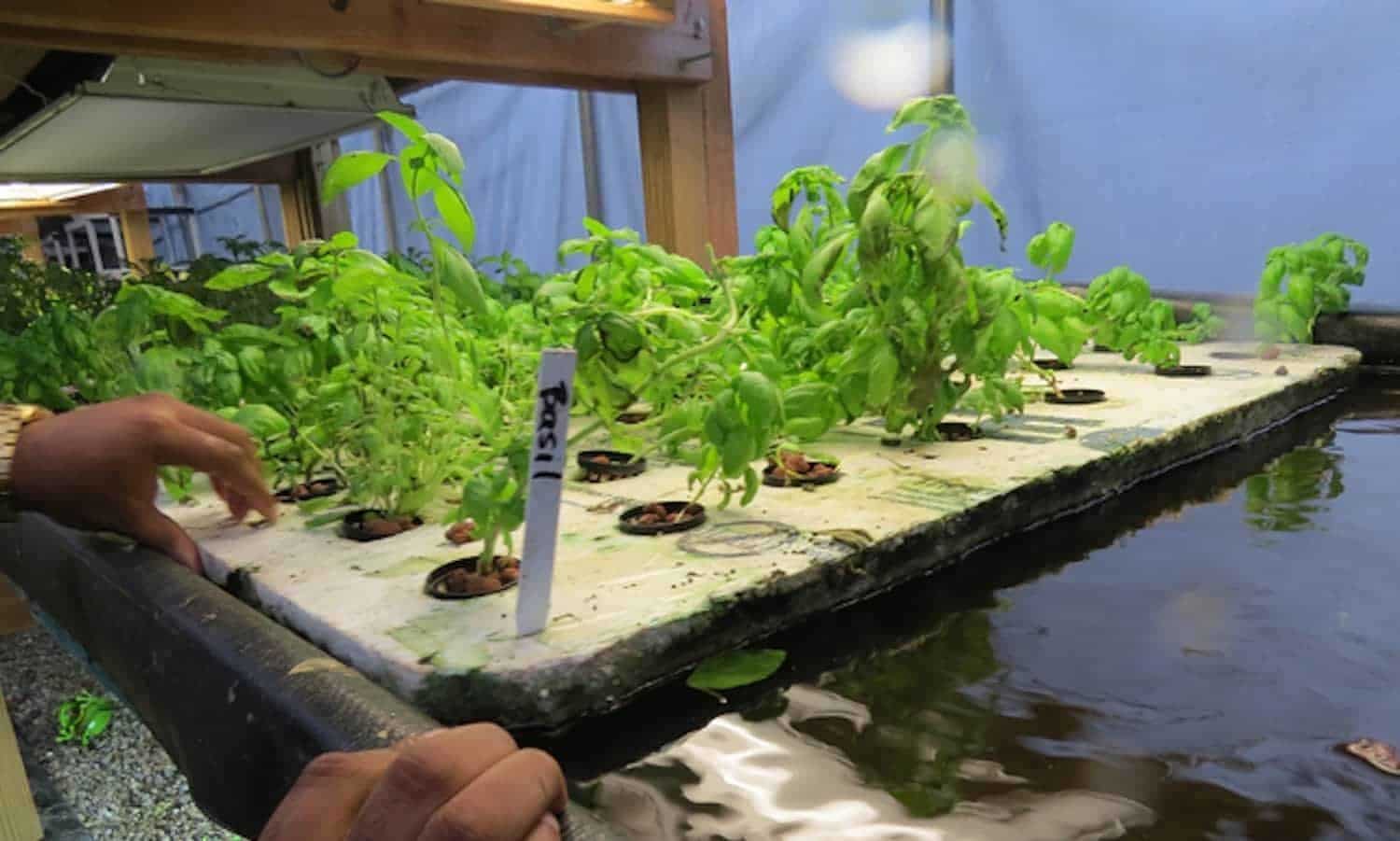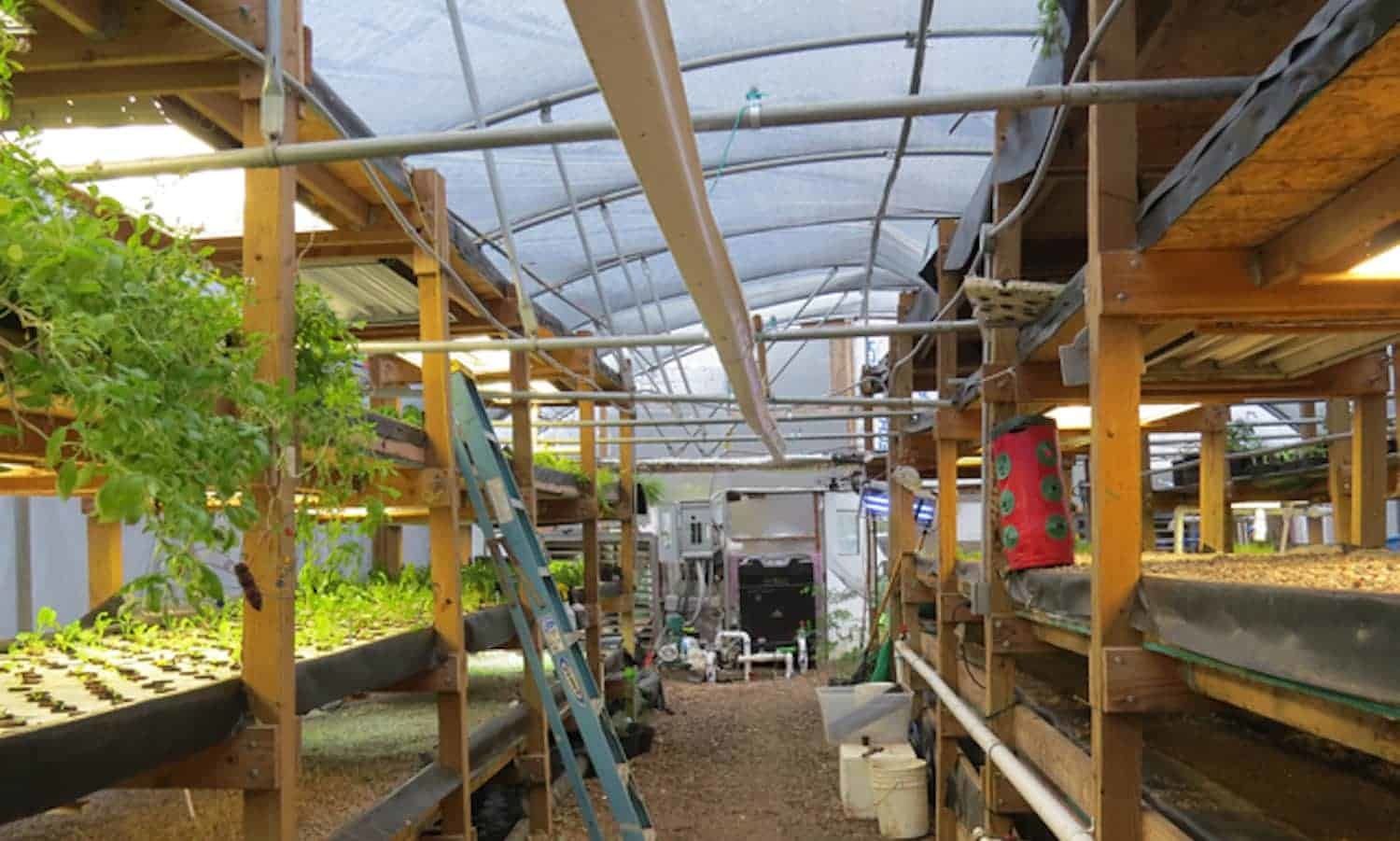
Urban Farming Organization Visualizes a Franchise Model to Produce Fresh Fish and Vegetables

Lisa Waterman Gray
By Lisa Waterman Gray
On a cool September morning, Dre Taylor dodged raindrops while talking with several people tending beans, peppers, tomatillos, collards and more outside of a 4,500-square-foot building. This is Nile Valley Aquaponics, a vibrant fixture in Kansas City, Missouri’s urban core. The name came from Egypt where people cultivated plants and fish thousands of years ago. Goats and picnic tables share outdoor space and offices occupy a nearby house.
Last summer (2018), Nile Valley Aquaponics grew dozens of fruits, vegetables and herbs, from tomatoes and squash to basil and sage, kale and Swiss chard. Its 100,000 Pound Food Project seeks to produce 100,000 pounds of local fresh fish, vegetables and herbs, creating greater access to healthy food choices, while providing volunteer opportunities and economic stability in the area. Health education is also important. Several October classes will address growing mushrooms, building a greenhouse for less than US$500, and building a personal aquaponics system.
Nile Valley Aquaponics’ 100,000 Pound Food Project seeks to produce 100,000 pounds of local fresh fish, vegetables and herbs, creating greater access to healthy food choices.Lisa Waterman Gray
The organization operates under the 501c3 M2M (Males to Men) Community Foundation mentorship program, which Taylor launched in 2013. He also founded the Kansas City Urban Farm Co-Op whose Fruit Orchard opens on Sept. 29 in Swope Park.
Taylor’s interest in aquaponics began following a Will Allen workshop by former professional basketball player and founder of Milwaukee-based Growing Power Backyard Aquaponics (the nonprofit has closed). After creating a personal aquaponics system and a 2013 visit to Growing Power Backyard Aquaponics, Taylor’s dream expanded. Once he had a 378-liter (100-gallon) fish tank operating, Taylor began talking to potential funders.
Construction began in October 2015 on two vacant lots donated by long time residents and community leaders Harrel Sr. and Myrtle Johnson. Three conjoining vacant lots were also purchased from the Land Bank of Kansas City. Taylor and volunteers removed 18 trees, which became tables, benches and a desk.
By March 2017, these previously distressed vacant lots had become a welcome urban oasis. “Our goal is to grow all fish food here, by January 2019,” Taylor said. “About 800 people have worked on this project. Everybody loves it and we have a lot of community support. We’re building a community based on food. Kids involved during the summer received stipends funded through grant money.”
Nile Valley’s facilities are welcome urban oases for the community.Lisa Waterman Gray
Modern-day aquaponics facilities operate from Myanmar to Peru. Aquaponics critics fear energy consumed by these indoor farms may negate potential climate benefits and Taylor admits his monthly electric bill can top US$1,000.
But these operations typically use less water than traditional farms do. Aquaponics farmers re-circulate water while housing more fish in smaller spaces. With plants included in ‘the loop’ the land and water needs decrease. In Half Moon Bay, California, Ouroboros Farms circulated the same 227,125 liters (60,000 gallons) of water for a year.
Organic certification has been another sticking point. However, late last year, the National Organic Standards Board rejected a proposal prohibiting hydroponic and aquaponic farms from organic certification. Nile Valley Aquaponics isn’t currently certified.
Taylor has patents pending on his state-of-the-art system. Today, approximately 30,000 tilapia thrive here, while three six-foot-deep troughs feed and water 5660-square-meters (20,000-square-feet) of indoor ‘farmland’ on four levels.
Taylor also created an organic pesticide liquid that should be available for sale next year. Every week three hundred pounds of coffee chaff from a coffee roaster, plus water, create ‘feed’ for more than a million Black Soldier Flies that eat it while breeding. This yields one ton of waste per month, making compost and releasing a natural pesticide liquid that is mixed with water before application to plants.
In 2019, a major expansion will unfold. Designed by St. Louis-based HOK (a global design, architecture, engineering and planning firm), it will incorporate two additional greenhouses, raised garden beds, a chicken coop and beehives. Sustainable materials, a wind turbine and rainwater cisterns will enhance the site, where neighbors will find community gathering and event spaces too.
“The new facility will be a sleek, new urban [agriculture] design that can be used in a mixed-use area—from neighborhoods to new developments,” Taylor said. “Nile Valley is a game changer, bringing healthy food, community, education, and economic development to an underserved community.”

 233k
233k  41k
41k  Subscribe
Subscribe 

